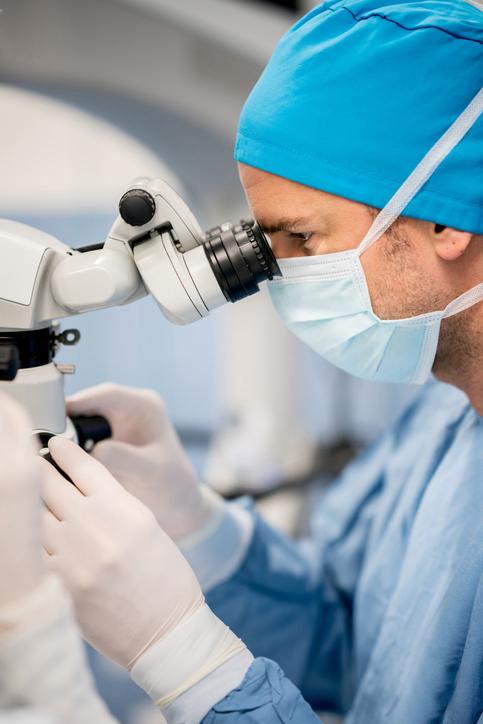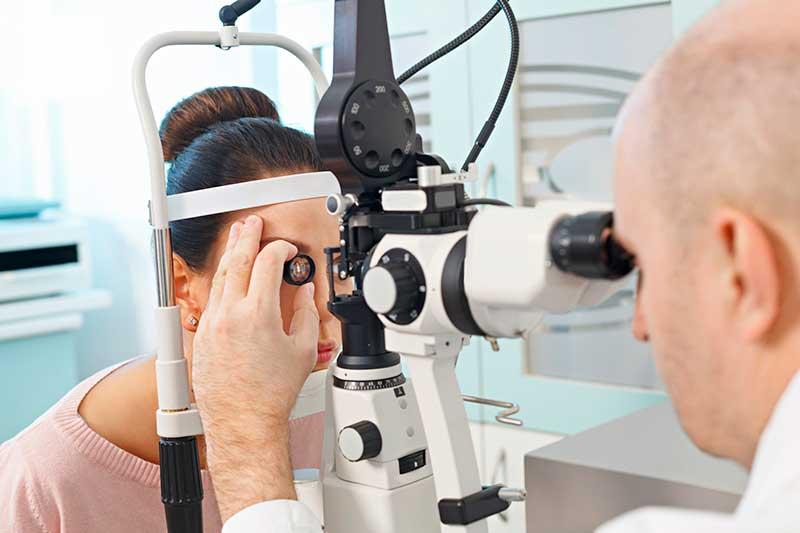Welcome
 The University of Arizona College of Medicine at South Campus offers a three-year ophthalmology residency program combining clinical training, academic activities, and research opportunities. Two first year positions are available at the PGY-2 level. The program's residents work hand-in-hand with the residents of the University of Arizona College of Medicine-Tucson Program. Together, the two programs function as a 4-resident per year program with 12 total residents at the University of Arizona.
The University of Arizona College of Medicine at South Campus offers a three-year ophthalmology residency program combining clinical training, academic activities, and research opportunities. Two first year positions are available at the PGY-2 level. The program's residents work hand-in-hand with the residents of the University of Arizona College of Medicine-Tucson Program. Together, the two programs function as a 4-resident per year program with 12 total residents at the University of Arizona.
The program is located in Tucson, Arizona. Tucson is a medium-sized (over 1 million people), sun-belt city where the lifestyle is relaxed, the dress casual, and the cost of living affordable. Leisure activities center around the outdoors and the surrounding desert. The UA is a huge resource and brings many cultural events to the city.
The UA Department of Ophthalmology is a major southwestern referral center. The attending clinical staff consists of six full-time members. There are two full-time research faculty, two full-time optometrists, a large associate staff of volunteer faculty, and a supporting staff of technical personnel. There are three full-time and seven part-time physicians at the Southern Arizona Veterans Administration Health Care System (SAVAHCS). Three affiliated hospitals -- Banner-University Medical Center Tucson (BUMCT), Banner-University Medical Center South (BUMCS) and SAVAHCS -- with active inpatient/outpatient services, as well as research and teaching facilities, are involved in the residency program.
Residents participate in state-of-the-art diagnostic and therapeutic interventions with patients. The residents will interact with the residents of the UA Program, cross-cover for their respective institutions, and share a common didactic program.
Academic Program
The foundation of the residency didactic program is weekly rounds and lectures every Friday morning. Residents present clinical cases weekly at grand rounds on Wednesday mornings. The Department also sponsors evening lecture programs with visiting speakers and associate faculty. Both are excellent venues for interaction with the community physicians. Residents take the OKAP exam annually. Second year residents may attend one of the national OKAP review courses. Past resident classes have attended the Wills Review Course held in Philadelphia in early March of each year.
The Department has a 40-person conference room with multimedia capability. There is a resident computer lounge and an on-site library with recent ophthalmic publications and reference texts. The Arizona Health Sciences Library website provides free online access to many textbooks, which includes all subspecialties--atlases, video atlases, general ophthalmology references, differential books, therapy references, etc. Some of these books are the go-to sources for general information on a topic. The Library also provides free online access to numerous ophthalmology journals.
Clinical Training
 During the three-year residency, residents assume increasing responsibility for patient care. Beginning residents are closely supervised, and then given increasing autonomy as they demonstrate proficiency and understanding. Residents prepare case presentations, organize journal clubs, and assist in teaching medical students rotating through ophthalmology. In addition, senior residents, with faculty supervision, are expected to supervise and teach junior residents. Faculty are assigned and available for consultation with the residents on all rotations.
During the three-year residency, residents assume increasing responsibility for patient care. Beginning residents are closely supervised, and then given increasing autonomy as they demonstrate proficiency and understanding. Residents prepare case presentations, organize journal clubs, and assist in teaching medical students rotating through ophthalmology. In addition, senior residents, with faculty supervision, are expected to supervise and teach junior residents. Faculty are assigned and available for consultation with the residents on all rotations.
1st Year Residency
The first year (PGY-2) resident performs complete ocular examinations in the outpatient facilities, becoming proficient in gonioscopy, indirect ophthalmoscopy, tonometry, biomicroscopy, refraction, and physiologic testing. The resident rotates through the Alvernon clinics, SAVAHCS for general/continuity clinic and oculoplastics, and the office of Fishkind, Bakewell, Maltzman, Hunter and Associates Eye Care and Surgery Center for refractive surgery. The resident gains extensive experience in evaluating walk-in and emergency patients on a daily basis. The earliest encounters with ocular trauma are during the first year; and there is exposure to the subspecialty services, including glaucoma, cornea and external disease, neuro-ophthalmology, retina, oculoplastics, pediatrics, and contact lenses. The resident begins assisting intraocular surgery during this year, and functions as the primary surgeon for a variety of oculoplastics procedures with faculty supervision.
2nd Year Residency
The second year (PGY-3) resident rotates through general, glaucoma, pediatric, and retina rotations at the Alvernon clinics. The resident rotates in the community at Retina Associates and Cornea Associates. The resident continues participation in a general continuity clinic and oculoplastic surgery at SAVAHCS.
3rd Year Residency
During their third year (PGY-4), the resident serves as Chief Resident for three months and manages clinics at SAVAHCS for nine months. The resident at this stage of training performs high volume surgery with faculty supervision. Based on the problem, the resident's experience, and attending preference, there are successive levels of autonomy. The Chief Resident has responsibility for scheduling clinical and surgical responsibilities for the Department and assists in supervising junior residents. At the conclusion of the third year, the residents are expected to be able to enter practice without direct supervision.
International Experience
We are fortunate to have a faculty member who practices in Nogales, Sonora, Mexico, and who hosts our first year (PGY-2) residents for “Immersion Ophthalmic Spanish” for one to two weeks. The second year (PGY-3) residents participate in an international education experience for one week. This experience allows residents to treat rural and underserved patients.

Research
The faculty of the University of Arizona Department of Ophthalmology and Vision Science firmly believe that research experience is essential for developing an appreciation of medical literature and scientific methods. The Department subsidizes residents to present their research at national meetings.
University of Arizona clinical faculty have varied research interests in the areas of cornea, cataract surgery, refractive surgery, myopia, glaucoma, infectious diseases, optics, amblyopia, dry eyes, and neuro-ophthalmology. Our research faculty have special interests in the area of optics, cell biology, glaucoma, and visual development. The Department has a very active clinical studies program with special emphasis in Hispanic and Native American eye conditions. The Department has ongoing collaborations with the University of Arizona College of Optical Sciences, Biomedical Engineering, Pharmacology, and Aerospace and Mechanical Engineering.
Call
During the first and second year, call is approximately one night per eight days and one weekend per two months taken from home, covering the three affiliated hospitals. During the third year, weekday and weekend call is approximately one day/week in four for surgical backup, again taken from home.
Accreditation
The University of Arizona College of Medicine at South Campus Program is a fully accredited residency program. The program was reviewed in 2012 and re-accredited through the year 2020.
Benefits/Stipend
Residents are employees of Banner Health and receive 20 days of vacation a year, all scheduled through the Chief Resident and Residency Program Director. There are six holidays per year. Other benefits include medical and dental insurance, professional liability insurance, maternity/paternity leave, and lab coats. Stipends for the academic year 2018-2019 are as follows: PGY-2 $58,363; PGY-3 $61,015; PGY-4 $63,880. After one year of employment, residents are eligible for up to a 4% employer match to their 401(k) contributions.
At the University, residents hold designated campus colleague appointments, providing access to the University of Arizona Library and the campus recreation center, as well as other privileges. The program provides residents 10 days per year of sick leave. Educational leave to make presentations at national meetings is available, and, upon Department approval, a travel allotment is provided.

For further information about the residency program, contact:
Pat Broyles
Program Coordinator
(520) 626-0044
FAX: (520) 626-2042
pbroyles@eyes.arizona.edu

